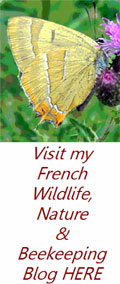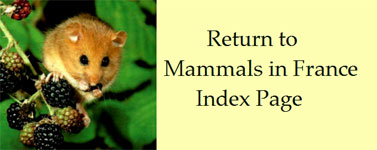Water Vole (Arvicola amphibius / A. terrestris) Campagnol terrestre

Water Vole (Arvicola amphibius / A. terrestris) Campagnol terrestre
Other English names used are European Water Vole, Water Vole and Eurasian
Water Vole.
Other French names Rat taupier or Grand campagnol
The aquatic form of the terrestrial vole is present in France North-East of
a line -
Dark blue = present. Pale blue = probably present. Pink = not present
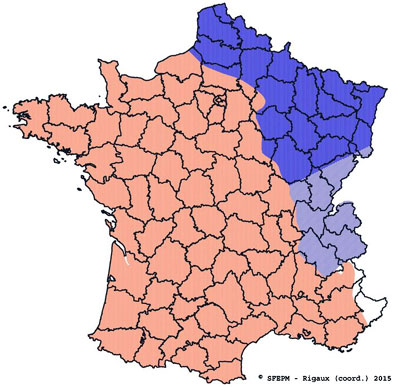
Prime water voles sites are found along densely
vegetated banks of slow flowing rivers, ditches, lakes, wet meadows and
marshes where water is present throughout the year. Steep riverbanks with
lush grass and dense vegetation are preferred for their burrows which can
have several entrances with one or more below the water line.
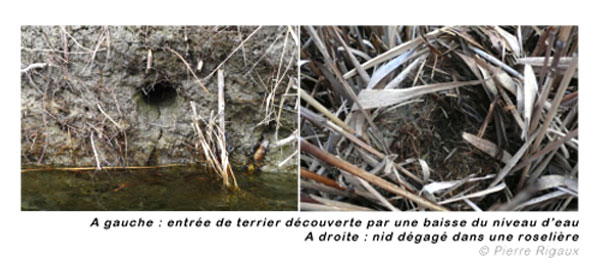 They
are mainly vegetarian feeding primarily on succulent vegetation, but will
also consume some insects, molluscs, and small fish.
They
are mainly vegetarian feeding primarily on succulent vegetation, but will
also consume some insects, molluscs, and small fish.
Reproduction occurs during the warmer months of the
year and may begin as early as February in mild years. Gestation period is
21 days. Females produce 2-4 litters per year. Average litter size between
4-6 young.
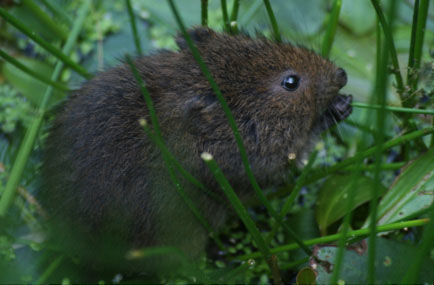
*******
In its terrestrial form it is generally known as Rat
taupier or Grand campagnol a term which is frequently misapplied to other
voles such as the Bank vole, Field vole, Common vole and Common Pine vole.
The terrestrial form occupies zones in the Jura,
They are a herbivores with a daily consumption that is equivalent to their own weight in roots, preferably fleshy types; dandelions, legumes, bulbs and rhizomes and prefer to occupy fresh, moist soils where they can be found in gardens, orchards, meadows and some cultivated land up to an altitude of 2500 metres.
Initially they will frequently colonize the networks that have been made by moles or previous vole colonies. They are constructed with burrows on different levels that can be as shallow as 20 cm below the surface with others deeply dug that descend to between 40 cm and 1 m where the lower levels will contain the nests protecting them from the weather and to some degree predation. A tunnel network can have a total length of 50 or 60 metres.
This is a species that can cause serious
agricultural damage due to their complex population variations which can
suddenly explode from a few individuals to being in excess of a thousand per
hectare causing devastation of grasslands or leguminous crops before
disappearing again as quickly as they appeared. These cycles which are
complex and hard to understand take place approximately every six years and
will spread out like ripples or waves from the initiating point.
Barren field following severe vole infestation.


